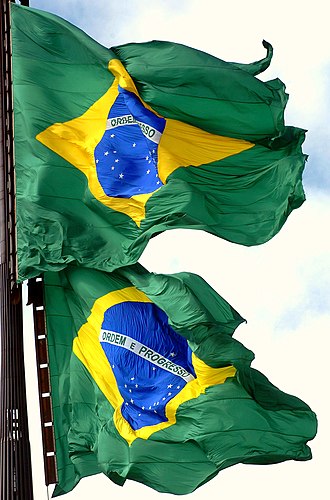Difference between revisions of "AY Honors/Flag protocol/es"
(Created page with ";Directrices generales: Las directrices generales son usualmente aceptadas universalmente.") |
(Created page with "Una gran parte del protocolo de la bandera se deriva del sentido común. Es decir, utilizándolo como una cubierta de mesa o papel de regalo son usos incorrectos. Debe ser tra...") |
||
| Line 7: | Line 7: | ||
Las directrices generales son usualmente aceptadas universalmente. | Las directrices generales son usualmente aceptadas universalmente. | ||
| − | + | Una gran parte del protocolo de la bandera se deriva del sentido común. Es decir, utilizándolo como una cubierta de mesa o papel de regalo son usos incorrectos. Debe ser tratado con ''respeto''. Muchos países consideran que firmar una bandera de una falta de respeto; agregar de una orilla sería más apropiado. Prender con alfileres de coser o artículos a una bandera también sería irrespetuoso. | |
;On a mast or pole: | ;On a mast or pole: | ||
Revision as of 22:41, 10 November 2014
Protocolo de la bandera define la ubicación correcta, la manipulación y el uso de las banderas. Algunos países han añadido ciertos protocolos en su sistema de la ley, mientras que otros prefieren tener «directrices» sin consecuencias civiles o penales.
- Directrices generales
Las directrices generales son usualmente aceptadas universalmente.
Una gran parte del protocolo de la bandera se deriva del sentido común. Es decir, utilizándolo como una cubierta de mesa o papel de regalo son usos incorrectos. Debe ser tratado con respeto. Muchos países consideran que firmar una bandera de una falta de respeto; agregar de una orilla sería más apropiado. Prender con alfileres de coser o artículos a una bandera también sería irrespetuoso.
- On a mast or pole
The flag of honor, that is the nation's flag in most cases, is flown on the center mast if possible. It is also correct to fly the flag on its own right. To an observer it would be on the far left. If more than three flags are used, the proper position is as far left from the point of view of an observer. An additional flag may be placed on the right side, but is not necessary.
When two poles are crossed, the position of honor is the flag that ends on the left side from the point of view of an observer (the pole will therefore end on the right).
In a semicircle, the position of honor is the center. If a full circle is used outside an entrance to an arena or stadium, the position of honor is directly opposite the entrance. If used to line the walls of the arena, the flag should be placed directly opposite the entrance.
- Hanging
When flown horizontally, as from a flag pole, the flag should be oriented so that the canton is closest to the top of the pole. If hung against a wall, the canton should be placed in the upper-left corner from the point of view of the observer.
When hung vertically, flags should be rotated so the canton is again closest to the top of the pole. If the flag is displayed against a wall, the canton should again appear in the upper-left corner, which incidentally requires that the flag be both rotated and 'flipped' from its horizontal orientation.
- Other places
On a vehicle the flag should be affixed securely to the front right of the chassis.
When placed with a podium or at a place of worship the flag should be hang directly behind or on a pole to the right of the speaker, from the point of view of the audience.
When carried in single file the flag of honor leads.
- Multiple flags
When flags of many nations are flown the flag of the hosting country should be placed on the left with the rest following in alphabetical order using the language of the host country.

